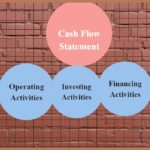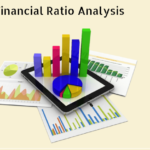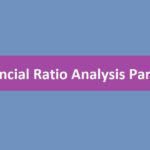Share Price
In the previous chapter, we have understood the first two stages of equity research. The first phase where we looked at the business of the company and the second phase where we looked at the financial performance of the company. The third step in equity research is to find out the valuation of the company’s shares. But this should be done only if you are absolutely sure about the business of the company after the first two steps.
An investment is considered a good investment only when you pay the right price for that business i.e. you get that share at a very good price. Sometimes even a mid-range company instead of a very good company is considered a very good investment if it is found at a very good price. That is to say, the price plays a very important role in the matter of investment.
In the next two chapters, we will try to tell you as much about the price as possible. The valuation technique is used to determine the share price. The meaning of valuation is to find out what the real worth of the company should be. The technique we will use to find the valuation of a company’s stock is called Discounted Cash Flow (DCF). In this technique, the true value of the company’s stock is estimated from the point of view of future cash flows.
The DCF model consists of many interconnected theories. We have to understand all these principles separately and then look at it from the point of view of DCF. In this chapter, we will specifically look at the most basic principle of DCF i.e. Net Present Value (NPV). We will then move on to other principles and finally understand DCF.
Future Cash Flow
The basis of the DCF model is future cash flow. Let us understand this with an example:
Suppose there is a pizza seller named Vishal who makes the best pizza in town. He enjoys making pizza so much that he invented a new one – an automatic pizza maker. After putting all the necessary things in this pizza maker, the pizza comes out automatically in 5 minutes. Vishal thinks that this pizza machine can earn ₹ 500000 in 1 year and the machine can run for the next 10 years.
Vishal’s friend George is very fond of Vishal’s machine and makes an offer to Vishal to buy it.
What do you think George should pay Vishal for the machine? To find the answer to this question, we have to understand how much George can benefit from this machine. Suppose he earns ₹ 500000 every year for the next 10 years from this machine.
Now what will George’s cash flow look like:
| 2015 | 2016 | 2017 | 2018 | 2019 | 2020 | 2021 | 2022 | 2023 | 2024 |
| 500,000 | 500,000 | 500,000 | 500,000 | 500,000 | 500,000 | 500,000 | 500,000 | 500,000 | 500,000 |
So we can see that George will continue to get cash from the machine for the next 10 years from 2015.
This means that George will earn ₹ 50,00,000 from the machine in the next 10 years i.e. he cannot pay more than ₹ 50,00,000 for the machine. We cannot pay a price for anything that exceeds the benefits it brings.
Now suppose Vishal asks George for ₹X for the machine. Now George has two options either to pay ₹ X asked and buy the machine or to put those money in a fixed deposit scheme where he will get the money back along with 8.5% interest. Suppose George decided to buy a machine, then not putting money in the fixed deposit became his opportunity cost.
In this effort to calculate the price of an automatic pizza maker, we found out three things –
The total cash flow of this machine in 10 years will be Rs 50,00,000.
We know the total cash flow of this machine so the cost of the machine should be less than the total cash flow.
The opportunity cost of buying this machine is such an investment that gives a return of 8.5%.
Keeping these three things in mind now let’s move forward because we know that for next 10 years George will get ₹500,000 per year from this machine so it means George is trying to see the future of next 10 years in 2014 Is-
What will ₹500,000 be worth in 2016?
What will ₹500,000 be worth in 2018 as compared to today?
What will ₹500,000 be worth in 2020 as compared to today?
Overall, what will be the value of the cash flow that will come in the future?
The answer to these questions is hidden in the Time Value of Money. This means that if I can figure out the future money value of the cash flow today, it will be easier for me to work out the cost of the machine.
For the time being, we may move away from the pizza machine example, but in the end we will return to this example.
Time Value of Money (TMV)
Time value of money is a very important principle, it is used in all types of financial theories be it discounted cash flow analysis, financial derivatives pricing, project finance, annuity or anything else.
The principle of time value of money is based on the premise that the value of money varies with time. This means that if you have ₹ 100 today, then after 2 years that ₹ 100 will be worth something else. As time changes, so does the opportunity price and that opportunity price has to be correlated with the money price.
If we want to compare the value of today’s money with that of the future, then we have to take this money into the future and see its value. This method is called future value (FV). In the same way, if we want to see the value of money received in the future today, then we have to weigh that money according to today and it is called Present Value – PV.
In both the cases we have to add the opportunity cost or the opportunity cost to the money value as the time changes. When we calculate the future value of money in this way, it is called compounding. Similarly, when the price of future money is calculated at today’s price, it is called discounting.
Now let us see the formula for finding this FV and PV
Example 1 – How much will ₹ 5000 today be worth 5 years later, if the opportunity price is 8.5%?
In this example the future value (FV) would be:
Future Value = Total Amount*(1+ Opportunity Cost Rate)^ Total Years
Future Value = Amount * (1+ opportunity cost rate) ^ Number of years.
= 5000*(1+8.5%)^5
= 7518.3
This means that ₹5000 today will cost ₹7518.3 after 5 years if the Opportunity Cost is 8.5%.
Example 2 – What will be the ₹ 10000 received after 6 years from today in today’s price if the opportunity cost is 8.5 percent?
Here we are calculating PV.
Present Value = Amount / (1+ Discount Rate)^Total Years
Present Value = Amount / (1+Discount Rate) ^ Number of years
= 10,000 / (1+8.5%)^6
= 6129.5
This means that if the discount rate is 8.5%, then the price of ₹ 10000 received after 6 years from today will be Rs 6129.5 today.
Example 3 – If I change the question of the first example and ask that what will be the cost of Rs 7518.3 I get in 5 years today, if the opportunity cost is 8.5%. We know that for this we need to find the present value. It is also known that when we did this calculation in the reverse way in the first example, our answer was ₹5000. Let’s calculate the PV by:
= 7518.3/ (1+8.5%)^5
=5000
Now that you understand the time value of money, let’s go back to our pizza example.
The Net Present Value of Cash Flow
In the pizza example, let us once again see what kind of cash flow George is going to get after buying the machine.
| 2015 | 2016 | 2017 | 2018 | 2019 | 2020 | 2021 | 2022 | 2023 | 2024 |
| 500,000 | 500,000 | 500,000 | 500,000 | 500,000 | 500,000 | 500,000 | 500,000 | 500,000 | 500,000 |
Now the question is again the same – what should be considered the value of future cash flows today?
As you can see the cash flow is spread over the years in a similar manner. We have to discount this cash flow according to its opportunity cost or opportunity price.
Take a look at the table below in which cash flows for each year have been discounted to an opportunity price of 8.5%:
| Year | Cash Flow (Rupees) |
Payment
(Year) |
PV /Project Value ( Rupees) |
| 2015 | 500,000 | 1 | 460,829 |
| 2016 | 500,000 | 2 | 424808 |
| 2017 | 500,000 | 3 | 391481 |
| 2018 | 500,000 | 4 | 360802 |
| 2019 | 500,000 | 5 | 332535 |
| 2020 | 500,000 | 6 | 306485 |
| 2021 | 500,000 | 7 | 282470 |
| 2022 | 500,000 | 8 | 260,335 |
| 2023 | 500,000 | 9 | 239,946 |
| 2024 | 500,000 | 10 | 221151 |
| Total | 50,00,000 | 32,80,842 |
The number obtained by adding the present value (PV) of each year is called Net Present Value or NPV. In this example our NPV is ₹32,80,842 This means the total value of Cash Flow is ₹32,80,842 today. It is clear from this that if George buys this machine, then he should pay ₹ 32,80,842 or less.
Now look at it from the perspective of a company. If it was not a pizza machine, how would you calculate its future cash flow and calculate the share price of the company based on that? That’s exactly what we do in the discounted cash flow model.
Highlights of this chapter
- A valuation model like DCF helps us to find the share price of the company.
- The DCF model is based on a number of financial principles.
- Time Value of Money is a very important part of financial principles, it is used in many things like DCF.
- The value of money varies with time. Today’s value of money changes in the future.
- To find out the true value of money, we have to look at money in terms of time and also keep in mind its opportunity price.
- In Future Value (FV), we know the future value of money.
- In Present Value (PV), we find the value of money to be received in the future in today’s price.
- In Net Present Value (NPV), we find the total of all future cash flows plus today’s price.

Gaurav Heera is a leading stock market educator, offering the best stock market courses in Delhi. With expertise in trading, options, and technical analysis, he provides practical, hands-on training to help students master the markets. His real-world strategies and sessions make him the top choice for aspiring traders and investors.




